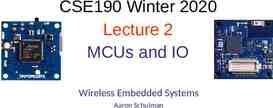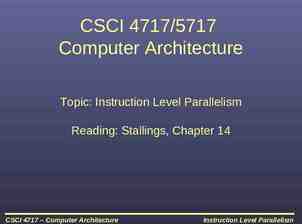The Singapore Modeling Method/Box Diagramming/Picture
18 Slides1.98 MB
The Singapore Modeling Method/Box Diagramming/Picture Algebra/Strip Diagrams
Introduction Apollo 13 Problem Solving Story PISA and TIMSS test results/Darling Hammond’s The Flat World and Education (2010) Singapore Math featured on NBC's Today Show (3:41) https://www.youtube.com/watch?v UwO dukjucU
Researcher(s) J. Cai & M. Brook Year 2003 Participants 4th graders (n 155), 5th graders (n 167), and 6th graders (n 150) Setting 4 Singaporean public elementary schools L. Englard 2010 3rd, 4th, and 5th graders S. Y. Ho & T. Lowrie 2014 Grade 6 students (n 607) Private elementary school in Florida 5 Singaporean public elementary schools K. R. Koedinger & A. Terao 2002 6th grade students (n 35) Pittsburgh area schools S. F. Ng & K. Lee 2005 5th grade students (n 151) 5 Singaporean public elementary schools S. F. Ng & K. Lee 2009 5th grade students (n 151), 14 primary teachers , and 4 heads of department 5 Singaporean public elementary schools Willis, G. B. & Fuson, K. C. 1988 2nd graders from two schools (n 24 and n 19) 2 public elementary schools in a small city near Chicago
CGI/SMM Grid Paper Activity Materials: CGI Framework Introduction/Connections to SMM Collaborative Problem-Solving Introductory Activity (Groups of 3 and 4) Unifix cubes (6 x 10 cubes per group) Centimeter grid paper (2-sided) Debrief. Do your best! Rise to the challenge! Live and learn!
Step-by-step model drawing (Forsten, 2010) 1. Read the entire problem. 2. Rewrite the question in sentence form, leaving a space 3. 4. 5. 6. 7. for the answer. Determine who and/or what is involved in the problem. Draw the unit bar(s). Chunk the problem, adjust the unit bars, and fill in the question mark. Correctly compute and solve the problem. Write the answer in the sentence, and make sure the answer makes sense.
Samples (Part-part-whole model) Cruise Problem: On Saturday, 1050 people went on a cruise. On Sunday, 1068 people went on a cruise. How many people went on the cruise over the 2 days? Orchid Problem: There were 2569 visitors at Orchid Gardens. 447 of them were adults and the rest were children. How many children visited Orchid Garden? [These problems are commonly found in Primary 3 (2nd Grade) textbooks.]
Samples (Comparison model) Enrollment Problem: Dunearn Primary School had 280 pupils. Sunshine Primary School has 89 pupils more than Dunearn Primary. Excellent Primary has 62 pupils more than Dunearn Primary. How many pupils are there altogether? Animal Problem: A cow weighs 150 kg more than a dog. A goat weighs 130 kg less than the cow. Altogether the three animals weigh 410 kg. What is the mass of the cow? Note: Student solutions for these 2 problems will be shown in the next few slides.
Findings: Samples of success modeling For example, the Enrollment Problem is an arithmetic problem using the comparative term “more than”.
Findings: Samples of success modeling The Animal Problem is an algebraic problem involving whole numbers.
Samples (multiplication & division models) Picture Problem: Bala took 24 pictures. David took 3 times as many pictures as Bala. How many pictures did the two boys take in all? Money Problem: Mary and John have 48 altogether. John has three times as much money as Mary. How much money has Mary? Volume Problem: If the volume of water in container A is ¼ the volume of water in container B, and the total volume of water in both containers is 250 liters, find the volume of water in container A. The Picture Problem is more of an arithmetic model (Primary 3, Grade 2), and the Money and Volume Problems are more algebraic (Primary 5, Grade 4).
Problem Posing Practice
http://www.mathplayground.com/thinkingblocks.html Addition and Subtraction Multiplication and Divisio n Decimals and Percent Ratios Modeling Tool Junior Fractions Algebra
Other Excellent Online Resources http:// www.koobits.com/2012/11/06/techniques-for-learning-the-sing apore-math-model-method http://www.symbaloo.com/mix/singaporemathresources
SMM Classwork/Homework We are doing problems #3, 5, 6, 7, 11, 12, 14, 16, 18, 20, and 21 together in class. The rest are classwork/homework. The other 10 problems on the Singapore Modeling Method Classwork/Homework (#1, 2, 4, 8-10, 13, 15, 17, 19) are due next class. Feel free to refer to your notes, and please attempt to use the Singapore Modeling Method before you move on to another strategy. Do your best! Rise to the challenge! Live and learn!
Strip Diagrams Materials: These are upper elementary problems involving ratios and a bridge to algebra. Use a number cube to select 3 problems to work together in class. The rest are classwork. Use any strategy to solve the problems. Debrief. Do your best! Rise to the challenge! Live and learn!
Centers Activity Materials: 4 or 8 stations with folders for confidentiality This is an individual activity with groups of 4 students per station. Use any strategy to solve the problems. Do your best! Rise to the challenge! Live and learn!
For more information . . . Carpenter, T. P., Fennema, E., Franke, M. L., Levi, L., & Empson, S. B. (1999). Children’s mathematics: Cognitively guided instruction. Portsmouth, NH: Heinemann and the National Council of Teachers of Mathematics. Carpenter, T. P., Franke, M. L., & Levi, L. (2003). Thinking mathematically: Integrating arithmetic and algebra in elementary school. Portsmouth, NH: Heinemann. Darling-Hammond, L. (2010). The flat world and education: How America's commitment to equity will determine our future. New York, NY: Teachers College Press, Columbia University. Englard, L. (2010). Raise the bar on problem solving. Teaching Children Mathematics, 156-163. Forsten, C. (2010). Step-by-step model drawing: Solving word problems the Singapore way. Peterborough, NH: Crystal Springs Books. Hong, K. T., Mei, Y. S., & Lim, J. (2009). The Singapore model method for learning mathematics. Singapore: EPB Pan Pacific. Ng, S. F., & Lee, K. (2009). The model method: Singapore children's tool for representing and solving algebraic word problems. Journal for Research in Mathematics Education, 40(3), 282-313. Walker, L. (2010). Model drawing for challenging word problems: Finding solutions the Singapore way. Peterborough, NH: Crystal Springs Books.
Thanks for working with this versatile method!























